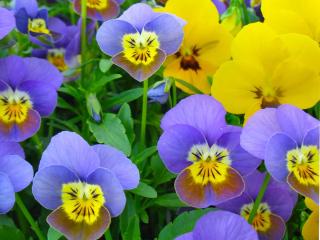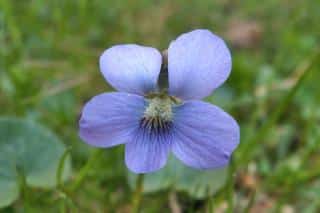

Viola cornuta is a very cute little flower that blooms all winter long.
Key Viola cornuta facts
Name – Viola cornuta
Family – Violaceae
Type – perennial
Height – 3 to 6 inches (10 to 20 cm)
Exposure – full sun
Soil – ordinary
Foliage: evergreen
Flowering: depends on variety: spring to summer or fall & winter → early spring
Here is how to grow these nice ground cover flowers for year-long blooming.

Sow in a nursery from June-July onwards, up until September.
It is highly recommended to transplant first to a nursery pot and then again to the ground in the following fall.
In any case, keep a distance of about 6 inches (15 cm) between each viola cornuta.
It only requires little care, perhaps only a bit of watering if the soil dries up.
You can remove wilted flowers regularly (deadheading) to trigger appearance of new buds.
When blooming is over you can cut back the entire mother plant and wait for new seeds to sprout.
It is better, though, to wait until the first flowers bloom from young sprouts before removing the older plants.
Viola cornuta looks a lot like pansy. They belong to the same family, but this violet is much more hardy than pansy is.
The flowers look similar to those of the little blue, yellow or white-colored pansies.

Since viola cornuta is particularly hardy, it will resist winder colds very well, even down to 5°F (-15°C).
You’ll be blessed to have flowers blooming all winter long for some varieties, over a relatively lengthy period.
Blooming starts in March and continues up to the beginning of summer, and it resumes again in fall.
The viola cornuta that blooms in spring is perfect paired with tulips which also bloom at the same time!